Seasonality in commodity prices new approaches for pricing plain vanilla options
We present a new term-structure model for commodity futures prices based on Trolle and Schwartz (2009), w...
View More
Amsterdam, Netherlands
Dear Esteemed Guests, Speakers, and Participants,
It is with great pleasure that we welcome you to the Global Congress on Advances in Biofuel and Bioenergy Research and Technology, to be held in the beautiful city of Amsterdam, Netherlands, on Nov 09-10, 2026.
As the world seeks to transition towards more sustainable and eco-friendly energy sources, the biofuels and bioenergy market has been experiencing phenomenal growth. According to recent market reports, the global biofuels market is expected to grow at a CAGR of 5.7% between 2021 and 2026, reaching a value of $218 billion by 2026. Similarly, the global bioenergy market is forecasted to grow at a CAGR of 4.9% during the same period, reaching $1.5 trillion by 2026.
The Global Congress on Advances in Biofuel and Bioenergy Research and Technology is an ideal venue for industry leaders, researchers, and professionals to share their knowledge and expertise, network with peers, and learn about the latest trends shaping the industry. The event features an extensive program that includes plenary sessions, keynote presentations, distinguished speaker talks, workshops, and symposiums.
Barcelona, the host city, is known for its rich cultural heritage, breathtaking architecture, and vibrant energy. With its stunning landscapes and world-class amenities, Barcelona offers a perfect backdrop for this prestigious event.
We are confident that this congress will be an excellent opportunity to gain new insights, expand your network, and enhance your knowledge. We hope that you find this event both enjoyable and informative, and we look forward to welcoming you to Amsterdam in November 2026.
------------------------
With best regards,
Adv. BBRT 2026
Organizing Committee
Peers Alley Media, Canada

Cross River Infrastructure Partners,
USA
Kepler University Clinics,
Austria
Global Mind Share,
USA
Freie Universitat,
Germany
K1-MET GmbH,
Austria
Indiana University Kokomo,
USA
Waseda University,
Japan
Decision Lens Inc,
USA


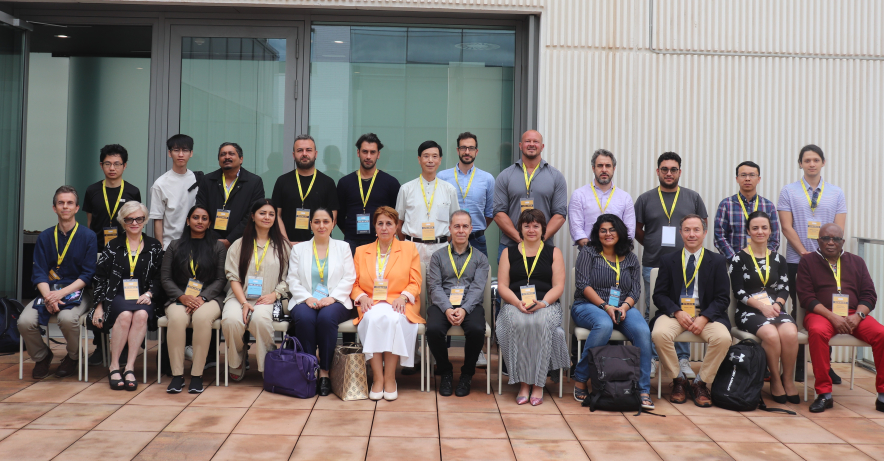
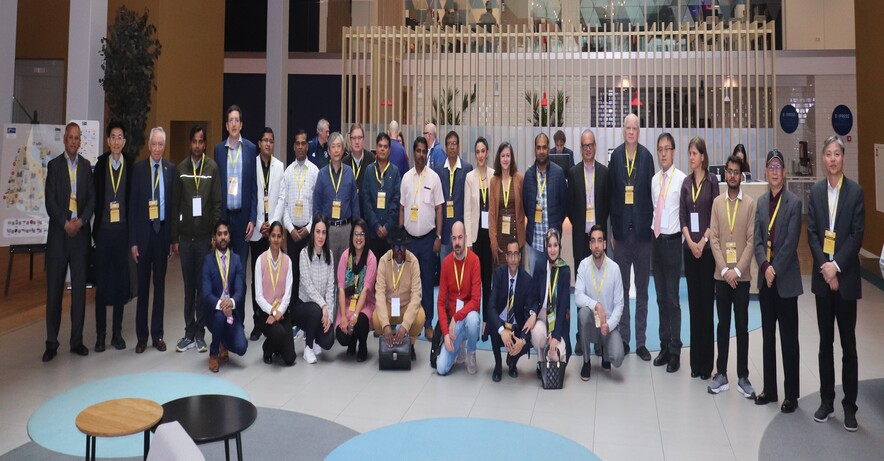

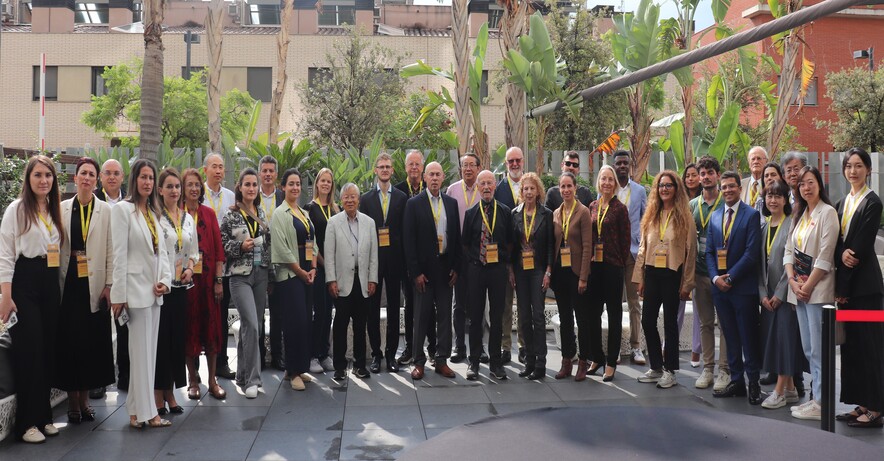
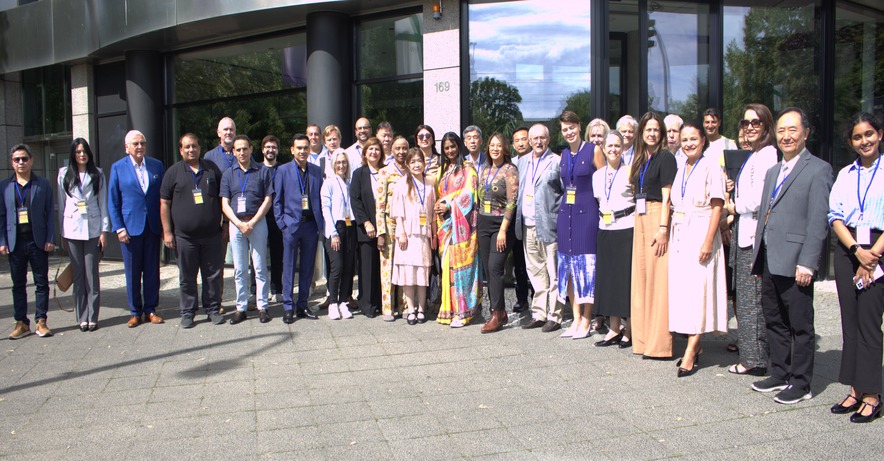


Market insights of Bioenergy in USA
In 2019, the worldwide global Bioenergy market reached a size of USD 344.90 billion. It is projected to reach USD 642.71 billion by 2027, with a compound annual growth rate (CAGR) of 8.0% during the period from 2020 to 2027.
Bioenergy refers to a renewable form of energy derived from natural or biological sources, including biofuel, biogas, biomass, and other bio-organic waste materials.
As of 2020, the global bioenergy market had a valuation of $102.5 billion, and it is anticipated to achieve $217.8 billion by 2030, exhibiting a CAGR of 7.6% from 2021 to 2030.
Market insights of Bioenergy in Europe
From 2022 to 2027, the Europe bioenergy market is projected to experience a CAGR exceeding 8%. Bioenergy refers to the energy produced from bio-based renewable sources such as biofuel, biogas, biomass, and other bio-organic waste materials.
Market insights of Bioenergy in Asia-Pacific
In 2021, the global bioenergy market achieved a value of USD 116.5 billion. Forecasts indicate that it will expand to USD 229 billion by 2030, exhibiting a compound annual growth rate of 7.7% within the forecast period from 2022 to 2030.
Bioenergy Companies Globally
/ Poet, LLC / Gevo, Inc. / Amyris, Inc. / Novozymes / Renewable Energy Group (REG) / Mascoma Corporation / LanzaTech / Solazyme / Fulcrum BioEnergy / Pacific Ethanol / Abengoa Bioenergy / DuPont Industrial Biosciences / Green Plains Inc. / Codexis / Sapphire Energy / Aemetis, Inc. / Edeniq / Cool Planet Energy Systems / Iogen Corporation / Enerkem Inc. / Fiberight LLC / NexSteppe / Renmatix / Butamax Advanced Biofuels / Virent, Inc. / ZeaChem Inc. / Proterro, Inc. / Calysta Energy / White Dog Labs / Joule Unlimited / Heliae Development, LLC / Genomatica / Comet Biorefining Inc. / Lignol Energy Corporation / Ensyn Corporation / Mascoma LLC / Zeachem Inc. / Qteros / Xyleco / Arzeda / Leaf Resources Limited / Genencor / Greenbelt Resources Corporation / SunOpta Inc. / Cool Planet Biofuels / Clariant / Myriant Corporation / Algenol Biofuels / Liquid Light Inc./ Rennovia Inc. / Beta Renewables / Algenetix / Siluria Technologies / Renova Energy / OriginOil / Greenlight Biosciences / Agrivida / Heliae / Aloterra Energy / Allylix Inc. / Chromatin Inc. / Elevance Renewable Sciences / General Biomass Company / Terrabon, Inc. / BlueFire Renewables / Green Plains Renewable Energy / Diversified Energy Corporation / NexSteppe Inc. / OPX Biotechnologies / Ecosynthetix / Sundrop Fuels Inc. / American Process Inc. / Chromatin, Inc. / Verdezyne Inc. / Fulcrum BioEnergy, Inc. / Cellana / Ze-Gen Inc. / Virdia / Intrexon Energy Partners / Kior / BARD Holding Inc. / EdeniQ, Inc. / Coskata Inc. / Butylfuel, Inc. / VerdeNero / Coskata, Inc. / Renmatix Inc. / PetroAlgae / Qteros, Inc. / Cellulosic Ethanol Technologies / Joule Unlimited Technologies / BioProcess Algae / New Planet Energy / LiveFuels Inc. / Greenleaf Biofuels LLC / Primus Green Energy / Bionavitas / BP Biofuels North America / Dynamic Fuels / Ceres Inc. /
Biofuel Companies Globally
/ Poet, LLC / Gevo, Inc. / Amyris, Inc. / Renewable Energy Group (REG) / Pacific Ethanol / World Energy / Green Plains Inc. / Valero Energy Corporation / Neste Corporation / Novozymes / Archer Daniels Midland (ADM) / Darling Ingredients / Velocys / Diamond Green Diesel / Fulcrum BioEnergy / Red Rock Biofuels / White Energy / DuPont Industrial Biosciences / Pacific Biodiesel Technologies / Renewable Energy Group (REG) / Aemetis, Inc. / Green Biologics / Butamax Advanced Biofuels / LS9, Inc. / Codexis / Enerkem Inc. / ZeaChem Inc. / LanzaTech / Cargill / Coskata Inc. / Iogen Corporation / Mascoma Corporation / Edeniq / Algenol Biofuels / Fiberight LLC / Propel Fuels / Genomatica / BlueFire Renewables / Sundrop Fuels Inc. / SG Preston / Joule Unlimited / Virent, Inc. / Lignol Energy Corporation / Lignetics Inc. / Chemtex International Inc. / Fulcrum Sierra BioFuels / KiOR Inc. / Dynamic Fuels / Ensyn Corporation / Roeslein Alternative Energy / Rentech, Inc. / Genencor / Verbio AG / Sapphire Energy / Primus Green Energy / TerraVia Holdings Inc. / Abengoa Bioenergy / Fiberight LLC / NextFuels / Sweetwater Energy / NexSteppe / SynGest Inc. / Qteros / Xyleco / NEXBTL / Joules Fuels / A4F-Algae for Future / Mascoma LLC / Sundrop Fuels Inc. / BioProcess Algae / BARD Holding Inc. / Elevance Renewable Sciences / Genifuel Corporation / Algenetix / Anellotech / PetroAlgae / Clariant / KiOR Inc. / Ecosynthetix / Cool Planet Energy Systems / Renmatix Inc. / Green Plains Renewable Energy / Zeachem Inc. / LS9, Inc. / Leaf Resources Limited / Rennovia Inc. / Comet Biorefining Inc. / OriginOil / Aloterra Energy / Inbicon / Terrabon, Inc. / Virent, Inc. / Cellana / Siluria Technologies / Gevo, Inc. / Algae.Tec / Edeniq / PetroSun BioFuels / Lanzatech Inc. /
100 universities that are known for their research and academic programs in bioenergy
/ Massachusetts Institute of Technology (MIT) - United States / Stanford University - United States / University of California, Berkeley - United States / University of Illinois at Urbana-Champaign - United States / University of California, Davis - United States / Iowa State University - United States / Purdue University - United States / University of Wisconsin-Madison - United States / University of Minnesota Twin Cities - United States / University of Michigan - United States / University of Florida - United States / Michigan State University - United States / Pennsylvania State University - United States / University of Texas at Austin - United States / Cornell University - United States / University of Washington - United States / University of British Columbia - Canada / University of Copenhagen - Denmark / Wageningen University & Research - Netherlands / Aarhus University - Denmark / Swedish University of Agricultural Sciences - Sweden / University of São Paulo - Brazil / University of California, San Diego - United States / Technical University of Denmark - Denmark / Ohio State University - United States / North Carolina State University - United States / Virginia Tech - United States / University of California, Los Angeles - United States / Texas A&M University - United States / University of Queensland - Australia / University of Edinburgh - United Kingdom / University of Sao Paulo - Brazil / Imperial College London - United Kingdom / University of Tennessee, Knoxville - United States / University of Guelph - Canada / University of Hohenheim - Germany / University of Adelaide - Australia / University of Saskatchewan - Canada / Washington State University - United States / University of California, Riverside - United States / University of Helsinki - Finland / University of Bonn - Germany / University of Alberta - Canada / University of Nebraska-Lincoln - United States / University of Maryland, College Park - United States / University of Arizona - United States / University of New Hampshire - United States / University of Delaware - United States / University of Connecticut - United States / University of Vermont - United States / Colorado State University - United States / University of California, Santa Barbara - United States / University of Oregon - United States / University of Tennessee at Martin - United States / University of Kentucky - United States / University of Louisville - United States / University of Tennessee Health Science Center - United States / University of Nevada, Las Vegas - United States / University of Nevada, Reno - United States / University of Arkansas - United States / University of Oklahoma - United States / University of Utah - United States / University of Kansas - United States / University of Missouri - United States / University of Iowa - United States / University of New Mexico - United States / University of Wyoming - United States / University of Colorado Boulder - United States / University of Arizona - United States / University of Texas at Dallas - United States / University of Oregon - United States / University of California, Santa Cruz - United States / University of Georgia - United States / University of South Carolina - United States / University of Alabama - United States / University of Mississippi - United States / University of North Carolina at Chapel/
Here are the top 50 funding topics in the field of bioenergy, biofuels, and biomass:
/ Biomass feedstock development and improvement / Advanced biofuels production technologies / Conversion and upgrading processes for biofuels / Bioenergy crop research and development / Biomass resource assessment and mapping / Biorefinery technologies and infrastructure / Sustainable biomass production systems / Bioenergy policy and regulatory support / Biogas and anaerobic digestion systems / Algal biofuels and microalgae cultivation / Bioenergy storage and distribution technologies / Thermochemical conversion of biomass / Biobased products and chemicals from biomass / Waste-to-energy technologies and systems / Carbon capture and utilization in bioenergy processes / Enzyme engineering for bioenergy applications / Advanced bioenergy systems modeling and optimization / Bioenergy sustainability and life cycle assessment / Bioenergy and biofuels market analysis and commercialization strategies / Biopower generation technologies and systems / Lignocellulosic biomass pretreatment and fractionation / Synthetic biology for bioenergy production / Integrated biorefinery concepts and design / Biomass logistics and supply chain management / Bioremediation and phytoremediation for bioenergy purposes / Sustainable bioenergy policy and market incentives / Bioenergy feedstock logistics and handling / Biochar production and utilization / Microbial engineering for bioenergy applications / Sustainable bioenergy village and community systems / Bioenergy technology demonstration and scale-up projects / Bioenergy education and workforce development / Renewable energy integration with bioenergy systems / Bioenergy waste utilization and valorization / Biomass torrefaction and densification technologies / Biodiesel production and optimization / Bioenergy finance and investment strategies / Bioplastics and biomaterials from biomass / Pyrolysis and gasification of biomass / Bioenergy system resilience and risk management / Bioenergy and climate change mitigation / Bioenergy co-firing and hybrid energy systems / Bioenergy innovation and entrepreneurship / Bioenergy resource mapping and planning / Bioenergy technology assessment and benchmarking / Biogas upgrading and purification technologies / Bioenergy market development and trade policies / Bioenergy policy and regulatory frameworks / Bioenergy social and environmental impacts / Biogas utilization for heat, power, and transportation /
100 societies and associations related to bioenergy, biofuels, and biomass
/ International Energy Agency (IEA) Bioenergy / Advanced Biofuels Business Council / American Society of Agricultural and Biological Engineers (ASABE) / Biomass Power Association (BPA) / National Biodiesel Board (NBB) / American Coalition for Ethanol (ACE) / European Biomass Association (AEBIOM) / Renewable Fuels Association (RFA) / Global Bioenergy Partnership (GBEP) / Bioenergy Association of Finland / Bioenergy Association of New Zealand / Brazilian Biomass and Renewable Energy Association (ABRACE) / Bioenergy Australia / Canadian Renewable Fuels Association (CRFA) / European Biogas Association (EBA) / Advanced Biofuels Canada (ABFC) / National Algae Association (NAA) / Biomass Thermal Energy Council (BTEC) / British Bioenergy Association (BBIA) / World Bioenergy Association (WBA) / California Advanced Biofuels Alliance (CABA) / Biomass Energy Resource Center (BERC) /Renewable Natural Gas Coalition (RNG Coalition) / German Bioenergy Association (BBE) / European Biomass Industry Association (EUBIA) / American Council on Renewable Energy (ACORE) / Indian Biomass Power Association (IBPA) / Danish Bioenergy Association (DBA) / Bioenergy Association of Ukraine / Swedish Bioenergy Association (Svebio) / Biomass Energy Network (BEN) / Indonesian Bioenergy Association (IKABI) / World Bioenergy Network (WBN) / National Biodiesel Foundation / Malaysian Bioenergy Society (MBioE) / Biogas Association of Ukraine / Argentinian Bioenergy Association (Asociación Argentina de Bioenergía) / Polish Biomass Association (POLBIOM) / French Association for Energy Management and Optimization (ATEE) / International Biomass Torrefaction Council (IBTC) / Bioenergy Association of Ireland / National Advanced Biofuels Consortium (NABC) / Italian Bioenergy Association (ITABIA) / Renewable Energy Association of Nigeria (REAN) / Bioenergy Association of Latvia / National Bioenergy and Biofuels Board (NBBB) - Philippines / Bioenergy Association of Hungary / Brazilian Association of Biomass and Renewable Energy (Associação Brasileira de Biomassa e Energia Renovável) / Bioenergy Association of Ghana / Austrian Biomass Association / Turkish Bioenergy Association (TAB) / Colombian Association of Renewable Energy (ACER) / Estonian Biomass Association / Bioenergy Association of Zambia / National Biodiesel Association of India (NBDAI) / Australian Bioenergy Association (ABBA) / Ukrainian Bioenergy Association / Slovenian Biomass Association / Brazilian Biodiesel and Biojetfuel Union (União Brasileira do Biodiesel e Bioquerosene) / Dutch Biomass Association (NBKL) / Bioenergy Association of Malawi / Bioenergy Association of Zimbabwe / National Biodiesel Association of Thailand / Finnish Bioenergy Association (Bioenergia ry) / National Bioenergy Association of Uganda / South African Bioenergy Association (SABA) / National Biodiesel Association of Kenya / Portuguese Biomass Association (APBA) / Scottish Bioenergy Association /
list of top 100 journals in the field of bioenergy, biofuels, and biomass
/ Bioresource Technology / Biomass and Bioenergy / Renewable and Sustainable Energy Reviews / Energy & Fuels / Journal of Cleaner Production / Fuel / Biotechnology for Biofuels / Applied Energy / Renewable Energy / Energy Conversion and Management / Green Chemistry / Progress in Energy and Combustion Science / Renewable Energy Focus / Global Change Biology Bioenergy / Biofuels, Bioproducts and Biorefining / Fuel Processing Technology / Industrial Crops and Products / GCB Bioenergy / Energy Policy / Journal of Energy Engineering / Sustainable Energy Technologies and Assessments / Waste Management / Journal of Power Sources / Frontiers in Energy Research / Environmental Science & Technology / ACS Sustainable Chemistry & Engineering / Journal of Applied Microbiology / International Journal of Energy Research / Journal of Environmental Management / Journal of Agricultural and Food Chemistry / Journal of the American Oil Chemists' Society / Biochemical Engineering Journal / Chemical Engineering Journal / Energy for Sustainable Development / Environmental Progress & Sustainable Energy / Journal of Environmental Chemical Engineering / International Journal of Hydrogen Energy / Journal of Industrial Ecology / Journal of Environmental Science and Health Part A: Toxic/Hazardous Substances & Environmental Engineering / Journal of Cleaner Production and Eco-Efficiency / Journal of Thermal Analysis and Calorimetry / Journal of Analytical and Applied Pyrolysis / Journal of Renewable and Sustainable Energy / Frontiers in Plant Science / Process Biochemistry / Journal of Environmental Sciences / BioEnergy Research / Journal of Chemical Technology and Biotechnology / Catalysis Today / Journal of Sustainable Bioenergy Systems / Journal of Environmental Engineering / Environmental and Experimental Botany / Energy Science & Engineering / Current Opinion in Biotechnology / Environmental Management / Renewable Agriculture and Food Systems / Resources, Conservation and Recycling / Energy Journal / Environmental Technology / Biomass Conversion and Biorefinery / Journal of Environmental Chemical Engineering / Journal of Environmental Monitoring / Journal of the American Chemical Society / Environmental Pollution / Biofuels / International Journal of Energy and Environmental Engineering / Environmental Engineering Science / Journal of Environmental Science and Health Part B: Pesticides, Food Contaminants, and Agricultural Wastes / Journal of Sustainable Energy Engineering / Journal of Environmental Biology / Journal of Environmental Quality / Renewable Energy and Environmental Sustainability / Journal of Chemical Engineering and Process Technology / Environmental Science and Pollution Research / International Journal of Environmental Science and Technology / Journal of Environmental Studies and Sciences / Journal of Environmental Chemical Engineering / Bioengineering / Energies / Journal of Environmental Sciences (China) / Applied Sciences / Clean Technologies and Environmental Policy / Journal of Environmental Engineering and Science / Biomass Conversion and Biorefinery / Journal of Environmental and Engineering Geophysics / Renewable Energy Integration and Management / Sustainable Energy Technologies and Assessments / Journal of Renewable Materials / Journal of Environmental and Public Health / Journal of Environmental Health Science and Engineering / Environmental Progress / Journal of Environmental Inform /
Hesperia Barcelona Del Mar
C. d'Espronceda, 6, 08005 Barcelona, Spain
Barcelona is one of Europe's best-known and most visited cities, with an estimated twelve million visitors per year.
Barcelona is well-known for its world-class football team, stunning architecture, vibrant nightlife, sandy beaches, and world-class cuisine. Not to mention a thriving cultural heritage and vibrant neighbourhood festivals that draw visitors from all over the world.
Barcelona is Spain's capital and the country's second most populous city, with 1.6 million residents, ranking it seventh in the European Union after Paris, London, Madrid, the Ruhr area, Berlin, and Milan.
It is one of the world's most important tourist, economic, trade fair, and cultural centres, and its influence in commerce, education, entertainment, media, fashion, science, and the arts all contribute to its status as a major global city. It is a significant cultural and economic centre in southwestern Europe, ranked 24th in the world (before Zürich and after Frankfurt), and a significant financial centre.
20 Top-Rated Tourist Attractions in Barcelona:
• Basílica de la Sagrada Família
• Barri Gòtic (Gothic Quarter)
• Casa Milà (La Pedrera)
• La Rambla: Barcelona's Social Hub
• Bogatell Beach
• Palau de la Música Catalana (Palace of Catalan Music)
• Catedral de la Santa Cruz y Santa Eulalia
• Parc Güell: Gaudí's Surrealist Park
• Casa Batlló
• Museu Picasso de Barcelona
• Plaça del Rei
• Camp Nou
• Magic Fountain of Montjuïc
• Scenic Views and Art Museums in Montjuïc
• La Barceloneta
• Reial Monestir de Santa Maria de Pedralbes
• Mercat de la Boqueria
• Fundació Joan Miró
• Parc del Laberint
• Quadrat d'Or

Bioenergy Researchers, Biochemists and Biophysicists 15%
Chemists & Chemical Engineers 15%
Scientists & Biofuels Industry Professionals 15%
Environmentalists 5%
Academicians and Researchers 20%
Sustainable Energy Experts 10%
Industries & Companies 15%
Venture Capitalists and Investors, Clean Energy Entrepreneurs 5%



“Stay updated with the latest insights, highlights, and key takeaways from global conferences and business meetings.”
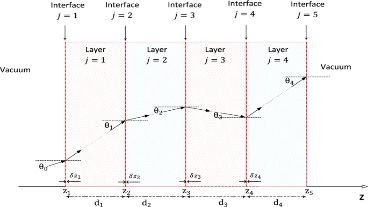
We present a new term-structure model for commodity futures prices based on Trolle and Schwartz (2009), w...
View More
Important biofuel and bioenergy research priorities need to be effectively communicated to the public at ...
View More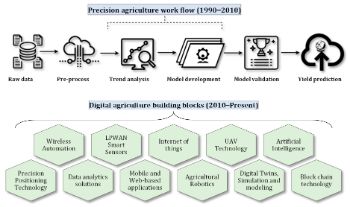
Technology revolution, such as Fintech, its services and products, could build sustainability and resilie...
View More
This paper demonstrates through empirical-rich research that China’s food security results from dynamic...
View More
The fundamental purpose of this paper is to create a comprehensive theoretical and computational framewor...
View More
The Gotthard transalpine base tunnel is located in Switzerland, it is considered the longest in the world...
View More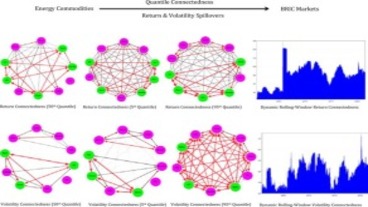
Using the quantile connectedness approach for the median, lower, and upper quantiles, we examined the ret...
View More
This conference presentation will discuss the Belledune Model, a green hydrogen hub being developed by Cr...
View More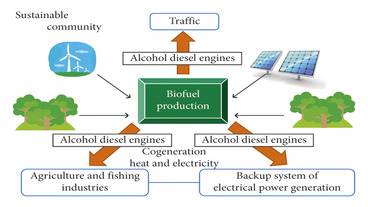
This study deals with the development of high performance diesel type alcohol engines. Utilization of ren...
View More



